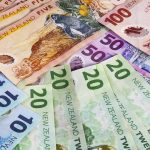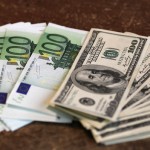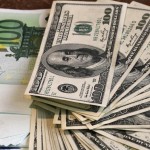Gold scored a slight increase on Friday, but continued to trade below $1 200 and headed to its first weekly decline in three after Fed officials confirmed they will raise interest rates in 2015.
Comex gold for delivery in February gained 0.27% to $1 198.0 per troy ounce by 08:26 GMT, having shifted in a daily range of $1 201.5-$1 195.7 an ounce. The precious metal edged up 0.03% on Thursday to $1 194.8.
Gold is on its way to mark its first weekly drop in three due to losses on pre-Fed meeting worries of an immediate rate hike. However, Fed Chair Janet Yellen announced after the meetings conclusion that policy makers would keep borrowing costs near zero for “at least a couple of meetings”.
Ms. Yellen also pointed out the criteria which have to be fulfilled in order to give the green light for an increase in interest rates, which once lifted will probably not reach normal levels until 2017.
Fed officials might be delaying the increase on worries that inflation is still below their target of 2%, mainly because of plunging oil prices, although US jobless claims dropped last week to a six-week low, yesterdays report showed.
The US dollar index for settlement in March was up 0.12% at 89.580 at 08:30 GMT, holding in a daily range of 89.580-89.400. The US currency gauge gained 0.17% on Wednesday to 89.477, but not before it reached 89.615, its highest since December 8th. A stronger greenback makes dollar-denominated commodities more expensive for holders of foreign currencies and curbs their appeal as an alternative investment, and vice versa.
Economists at Wall Street’s largest banks projected borrowing costs to increase more than once in 2015, with the first one to come by June, according to a Reuters survey.
“Gold prices are currently capped by a stronger dollar and ongoing weak oil prices,” James Steel, an analyst at HSBC, wrote in a note cited by the CNBC. “Equity-market gains further reduce the appeal of alternative assets like gold.”
Gold jumped $90 to $1 230 last week, compared to $1 140 a week earlier. That movement caused investors to be more careful, said Yuichi Ikemizu, branch manager at Standard Bank in Tokyo, cited by the CNBC.
“People are not overly bearish anymore. They have learned their lesson when gold rallied sharply so theyre not bold enough to go short around these levels,” he said.
Meanwhile, Indias gold market has reached oversupplied levels following an increase in deliveries during the recent three months. Demand in the worlds second-largest gold buyer is projected to decrease as importers offered the precious metal at a $2 discount versus London prices, reaching their lowest in nearly five months.
Assets in the SPDR Gold Trust, the biggest bullion-backed ETF, remained unchanged for a second time on Thursday at 721.56 tons, after two days of declines.
Pivot Points
According to Binary Tribune’s daily analysis, February gold’s central pivot point on the Comex stands at $1 199.1. If the contract breaks its first resistance level at $1 209.6, next barrier will be at $1 224.5. In case the second key resistance is broken, the precious metal may attempt to advance to $1 235.0.
If the contract manages to breach the S1 level at $1 184.2, it will next see support at $1 173.7. With this second key support broken, movement to the downside may extend to $1 158.8.





